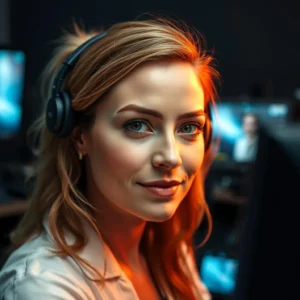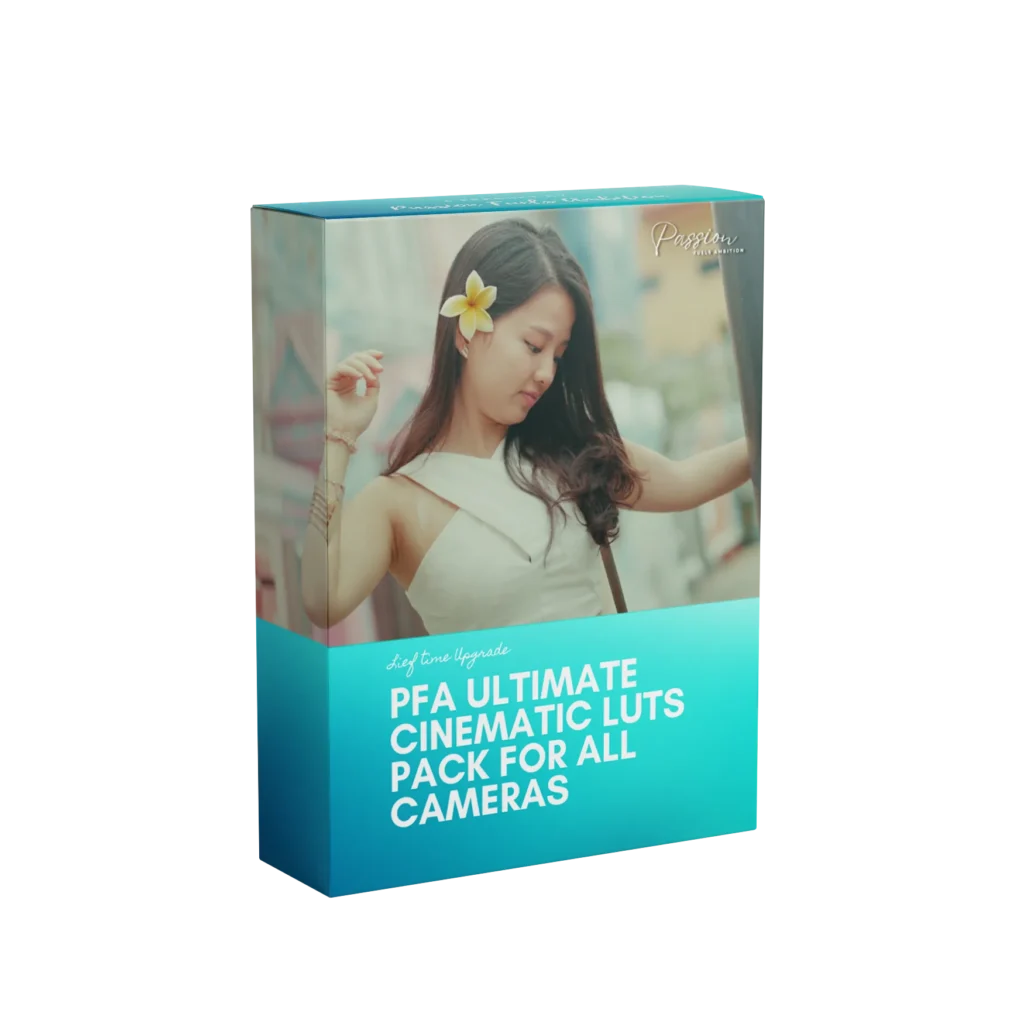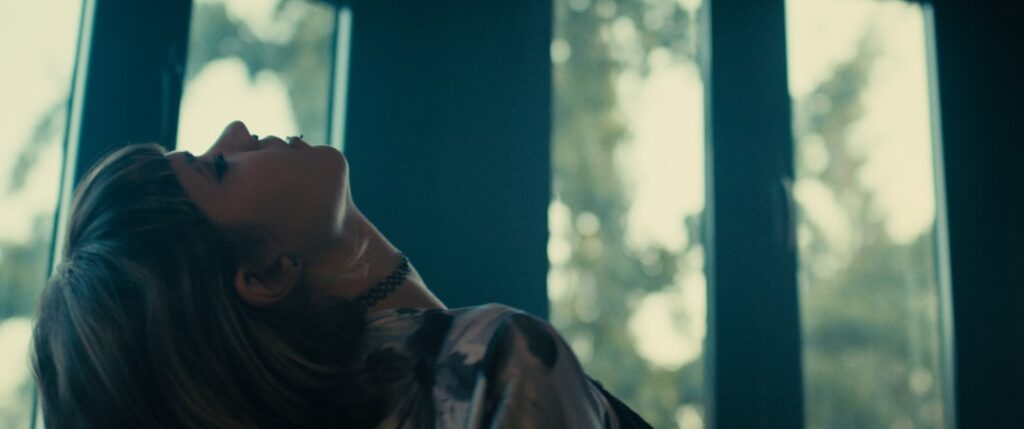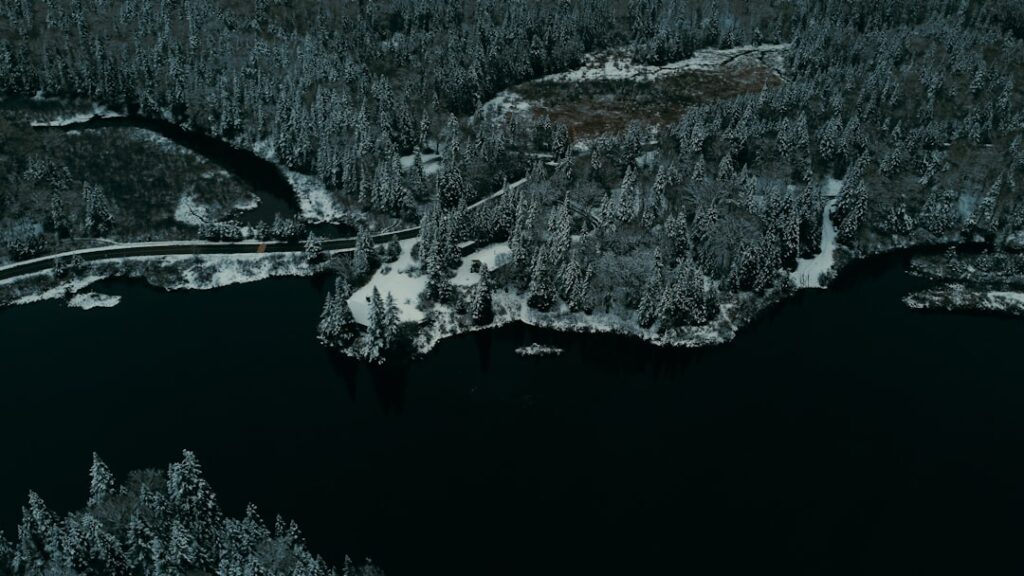No products in the cart.
What Is A LUT In Video And Free Lifetime LOG To Rec709 LUTs Pack
- by Nash Yang
- November 3, 2024
- 5 Minutes

What is a LUT? Colors have the power to weave emotions into our visual tales, transforming simple footage into captivating stories that linger in the minds of viewers. Think of a LUT as a masterful painter’s palette, allowing video editors to breathe vibrant colors and deep tones into their visuals.
When armed with a thoughtfully curated collection of LOG to Rec709 LUTs, creators gain complimentary access to an invaluable resource that can elevate their projects from the mundane to the phenomenal.
These extraordinary tools for color grading hold the key to unlocking a world of breathtaking visual narratives.
They offer creators the ability to mold the essence and character of each scene with fluidity and grace. Imagine, for instance, infusing a vibrant color grading technique through the use of advanced lookup tables in your video editing process to enhance digital imaging.
Click here to learn more about: pfa log footage to rec 709 ultimate bundle lifetime upgrade
Click here to learn more about: pfa log footage to rec 709 ultimate bundle lifetime upgrade
What is a LUT? Understanding Lookup Tables In Video
As we uncover the power of LUT and understand define a lut and its power of visual storytelling, the transformative role of color becomes clear. In this vibrant world of video production, where each frame adds a brushstroke to a grand narrative, artists wield the mighty tools at their disposal. Among these, lookup tables act as mysterious alchemists, turning ordinary visuals into cinematic style that captivates and enchants audiences.
These digital instruments navigate complex color spaces, flawlessly converting raw clips into polished masterpieces, much like a composer crafting an unforgettable symphony. A carefully selected LUT can enhance brightness adjustment and contrast enhancement, allowing filmmakers to evoke deep emotions and guide audiences through a visual journey that lingers long after the screen goes dark.
What is a LUT? As creators manipulate these powerful assets, the wonders of postproduction emerge, revealing the extraordinary potential hidden within each frame. By mastering the art of color grading, they can experiment with tonal mapping and saturation control, breathing life into their footage and elevating their artistic vision.
The strength of a well-applied lookup table reaches beyond mere aesthetics; it plays a crucial role in the consistency and overall quality of a film’s visual narrative. When used thoughtfully, LUTs harmonize the dynamic range and visual fidelity of a project, creating a cohesive look throughout. In this dance of colors and light, creators discover endless opportunities to refine their grading workflow, allowing their unique voice to shine through. So do you know what is a LUT now?
How Does Color Grading Improve Footage
As the narrative threads woven through previous discussions intertwine, we now enter a vibrant realm where each scene unfurls like a richly woven tapestry, with every hue breathing life into the unfolding story. When filmmakers master the art of image processing, raw visuals undergo a metamorphosis, evolving into mesmerizing tales where each frame serves as a brushstroke on the canvas of imagination.
This transformative process harnesses the power of tonal mapping, allowing the emotions within the footage to resonate profoundly with viewers. With skillful color grading, colors leap to vivid prominence, crafting moods that captivate and enchant, guiding the audience through the intricate layers of the tale.
Every meticulous adjustment acts as a note in a symphony, deepening the cinematic experience and immersing spectators in a dance of light and shadow. This interplay elevates visual storytelling to new heights, revealing the nuances and depth of the film’s essence as different color palettes invite the audience to experience the story in fresh and exciting ways.
Shifting from our exploration of LUTs and their vital role, we now illuminate how these creative tools shape the core of postproduction, enhancing the overall cinematic artistry. Through this innovative process, filmmakers can refine the grading workflow, fully embracing image processing, tonal mapping, and HDR techniques that bring their artistic vision to life.
Image Processing in Filmmaking
- Tonal mapping enhances emotional resonance by adjusting brightness of images.
- Color grading significantly influences the mood and atmosphere of a film.
- Each frame in a film contributes to the overall narrative and visual experience.
- Utilizing LUTs (Lookup Tables) streamlines the grading workflow, allowing for consistent color management across scenes.
The Role Of LUTs In Postproduction
Building on our understanding of color grading and its emotional resonance, we now enter a realm where digital artistry thrives, transforming unassuming footage into stunning visual narratives. At the heart of this transformation lies the remarkable tool known as the LUT, or Lookup Table, a bridge that connects raw footage to imaginative brilliance, allowing filmmakers to sculpt their artistic visions with elegance and flair.
Imagine a vibrant color palette that breathes life into every frame, where each nuanced adjustment ignites the screen and accentuates the dynamic range of emotions within a scene. By skillfully applying LUTs, filmmakers can elevate their footage from drab to dazzling, meticulously crafting a cinematic look that resonates deeply with audiences.
In this exhilarating playground of professional editing, creators immerse themselves in the art of image processing, harnessing the power of color spaces like Rec. 709 to discover the perfect balance between aesthetics and storytelling. As we witness the synergy between LUT application and editing software, the process reveals a pathway to workflow efficiency, making every grading workflow not only effective but also profoundly creative.
As we weave through the methods of enhancing footage through color grading, one can appreciate how these adjustments harmonize seamlessly with the essence of visual storytelling. Each LUT—whether artistic or technical—shapes the narrative, guiding viewers through a visual tapestry where brightness adjustments and contrast enhancements elevate the film’s production values and visual continuity. In this intricate dance of color and light, filmmakers not only showcase their artistic vision but also embrace the robust potential of digital imaging to transport audiences into new realms of storytelling.
Exploring The Rec. 709 Color Space
Having examined how LUT application and color grading transform raw footage into compelling visual narratives, we now step into the vibrant realm of the Rec. 709 color space. This framework serves as a guiding star for filmmakers, ensuring that colors not only tell a story but resonate deeply with the audience, turning mere images into captivating experiences.
Imagine a world where colors breathe life into stories. Each shade whispers a tale rich in emotion and imagination. Within this landscape of digital imaging, color acts as a powerful thread, weaving the strands of visual effects and narrative together.
Visualize a canvas where each brushstroke invites viewers to soak in a symphony of vivid hues and deep tones. This essential tool shapes raw footage into a polished masterpiece, resonating with audiences in transformative ways.
The Rec. 709 color space is defined by its clear parameters, marking the limits of vivid shades within high-definition video standards. By using this color palette, filmmakers can ensure consistency and workflow efficiency across various media formats. This guarantees that their artistic vision remains intact from storyboard to final cut. As you uncover the intricate relationship between color science, visual effects, and scene interpretation, you will discover the keys to enhancing your creative projects.
- Color boosts storytelling by evoking emotions and crafting immersive experiences.
- High-definition video standards offer a reliable palette for filmmakers, ensuring consistency.
- The dance of light and shadow is vital for capturing the creator’s vision in visual narratives.
- Streamlined workflows in color grading can greatly enhance the quality of creative projects.
Enhancing Visual Storytelling With LUTs
Our film becomes a vibrant canvas, where colors leap off the screen like spirited dancers in an enchanting performance. In this world of artistic vision, LUTs and the Rec. 709 color space breathe life into each frame, transforming the way stories are told.
Through the careful manipulation of brightness and contrast, scenes evolve, infusing them with a breathtaking visual symphony that speaks to the viewer’s heart. Every tonal mapping choice enhances emotions that sweep from serene calmness to exhilarating joy, drawing audiences deep into the narrative you’ve crafted.
As you navigate your editing software, think of every adjustment as a journey into the essence of your story. With saturation control, the raw energy of your characters shines brightly, capturing the heart of their experiences. Interweaving these elements elevates your visuals beyond enhancement; they pulsate with the rhythm of the tale, inviting your audience to become part of that world.
The latest video editing tools offer advanced features like brightness adjustment, contrast enhancement, and detailed footage enhancement, designed to create stunning HDR visuals. These production tools strengthen your visual storytelling, allowing filmmakers to achieve consistency through meticulous color management across a variety of digital formats. In a landscape enriched by digital imaging, mastering these techniques not only lifts production values but also amplifies artistic expression, ensuring every frame carries the emotional depth and resonance intended.
What Are Artistic LUTs And Their Uses
What is a LUT and their use? Building upon the vibrant narratives woven by color grading and visual storytelling, artistic LUTs emerge as essential tools that enhance this expressive journey. These enchanting enhancements serve as the magical brushstrokes that turn ordinary visuals into extraordinary storytelling masterpieces.
Understanding Lookup Tables
Lookup Tables, commonly known as LUTs, are vital elements in the world of color correction, igniting footage with electrifying vibrancy. These technical marvels possess the remarkable ability to evoke feelings, painting scenes with emotional depth and rich color palettes that resonate profoundly with audiences.
Empowering Creativity
They empower creators to harmonize their artistic vision with precise color management, offering a seamless blend of imagination and technical skill. As one navigates the creative landscape, LUTs act as alchemists, transforming raw footage into engaging narratives that not only charm viewers but also draw them into captivating worlds.
Enhancing Visual Storytelling
This integration enriches visual storytelling, allowing creators to meld SDR, color management, innovative filming techniques, and sophisticated editing software into their unique artistic visions. With the right LUT application, a simple scene can be infused with dynamic color and an enchanting cinematic look, elevating it to a nuanced experience filled with layers of meaning.
| Aspect of Color Grading | Importance |
|---|---|
| Emotional Resonance | Evokes deep feelings in audiences |
| Artistic Vision | Harmonizes imagination with technical execution |
| Visual Storytelling | Transforms raw footage into compelling narratives |
| Integration of Techniques | Seamlessly combines SDR, color management, and editing |
Achieving Cinematic Look Through Color Correction
Building on the enchanting journey of artistic LUTs and visual storytelling, imagine witnessing a narrative unfold where colors not only complement but also invigorate every passing moment. The profound impact of transforming hues and tones in your footage elevates it from the mundane to the magnificent, much like a skilled painter breathing life into a once-blank canvas.
In this vibrant adventure into color spaces, embracing the fusion of technical mastery and heartfelt storytelling is crucial. Every meticulous alteration becomes a pulse point, breathing dynamic color into your footage, engaging viewers on a deeper level and forging a rich connection with the narrative.
Amidst this colorful tapestry lies the concept of artistic calibration, akin to a director’s secret playbook—a harmonious blend of science and creativity. Envision a filmmaker standing before an expansive spectrum of colors, skillfully mixing them to evoke the unique mood of each scene. This transformative process shapes how your footage resonates, laying the groundwork for calibration strategies, aesthetic choices, conversion tools, and enhanced image processing.
As the narrative evolves through color correction, consider the dynamic range achieved by employing effective brightness adjustments and contrast enhancements. These calibration techniques not only refine image aesthetics but also help solidify a unified cinematic style, enhancing every moment while retaining visual continuity.
When you focus on your color palette, an enriched world unfolds—a space where every frame pulsates with imagined possibilities. Integrating various filming techniques and using specialized editing software unlock a treasure trove of creative tools. With a robust grading workflow, filmmakers can elevate their image processing, resulting in HDR visuals that burst with life and authenticity.
Ultimately, the impact of subtle changes—each tweaking of saturation control or tonal mapping—extends far beyond mere visuals. They enable storytellers to cultivate emotional depth, inviting audiences to fully immerse themselves in the shared experience. By effectively employing these strategies, one can produce art that resonates powerfully across diverse media formats, ensuring a lasting impression in the viewer’s heart.
Tips For Efficient Grading Workflow
As the hues and tones from earlier discussions create a vibrant canvas for your narrative, mastering the art of color grading becomes vital for bringing that vision to life. In this world where every frame resonates with emotion, a well-structured approach can transform technical tasks into a seamless creative journey, ensuring your project shines with exceptional visual fidelity.
Begin your quest by selecting the right color space transformation, a key link between your camera’s output and the mesmerizing cinematic style you dream of achieving. This crucial foundation supports the emotional storytelling interwoven throughout your footage.
Professional editing tools like DaVinci Resolve will serve as your faithful companions in this mission, simplifying the complex task of handling LUTs with elegance and accuracy. Utilizing these sophisticated creative tools enhances your efficiency, allowing your artistic vision to emerge with every modification.
Embrace the transformative power of color correction; these adjustments mold your film production, making each cut into an unforgettable piece of art that resonates deeply with viewers.
Grading in Film Production
- Color grading intensifies the emotional impact of a film, engaging viewers more profoundly.
- Choosing the appropriate color space is essential for realizing the desired cinematic look.
- Tools like DaVinci Resolve streamline the task of color manipulation, allowing for meticulous adjustments.
- Effective color adjustments can elevate a film’s narrative, making each scene more unforgettable.
Free LUTs Pack Drives Your Creativity
Free LUTs Pack Drives Your Creativity

Latest Products
Latest Posts
Ultimate Guide to Creating Stunning Interior Design Videos
Ultimate Guide to Creating Stunning Interior Design Videos in Singapore Play Video Introduction: Why Video Matters for Interior
Master Color Grading with Free LUTs for Final Cut Pro
Color grading is an essential aspect of the post-production process that can dramatically alter the mood and tone
Enhance Your Videos with Free LUTs
As a passionate creator, I have always been fascinated by the transformative power of color in visual storytelling.






